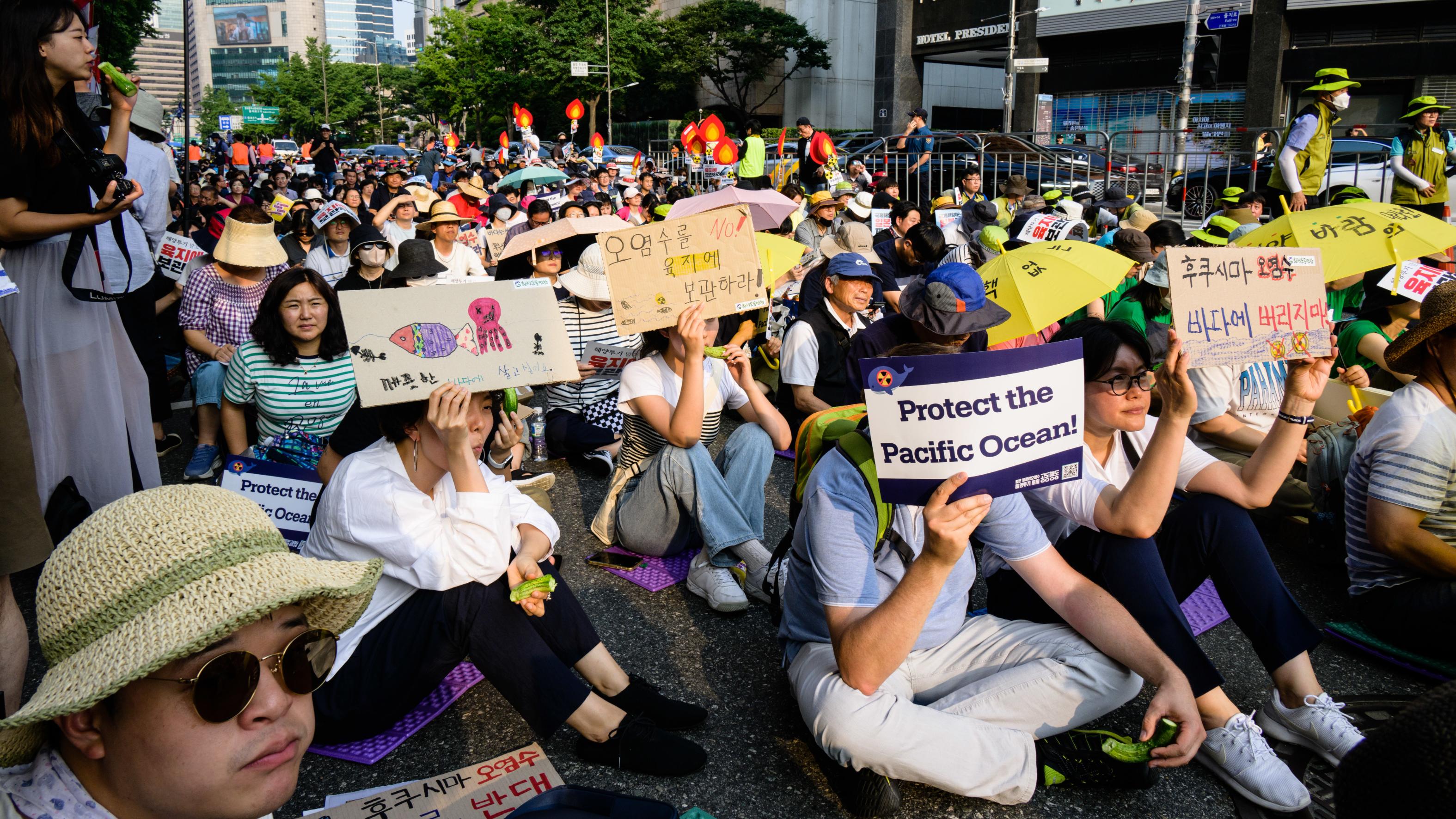Experts say Tokyo should not discharge nuclear waste; cite threats to marine ecology, food chain
 Activists gather to protest against a planned release of water from the Fukushima Dai-Ichi nuclear plant in Japan, in Seoul on June 24, 2023. (PHOTO / AFP)
Activists gather to protest against a planned release of water from the Fukushima Dai-Ichi nuclear plant in Japan, in Seoul on June 24, 2023. (PHOTO / AFP)
Environmental and social experts from across Asia have called on Japan to refrain from contaminating the sea with radioactive wastewater, after the nation began test running the equipment to discharge toxic water from a crippled nuclear power plant into the Pacific.
The nuclear-contaminated wastewater from the Fukushima Daiichi Nuclear Power Plant will contain traces of tritium, a radioactive isotope, and possibly other radioactive traces such as carbon-14, scientists said.
“Nobody wants to dump (radioactive substances) into the ocean,” said David Krofcheck, senior lecturer in the faculty of science at the University of Auckland in New Zealand.
“We need to be aware of the difference between tritium and carbon-14, on one hand, and the radioactive fission products which tend to remain in the human body,” he said, adding that tritium could still enter the food chain throughout its buildup in underwater plants.
“This organically bound tritium still decays with a half-life of 12.3 years, and it stays in the human body for about 10 days, the biological half-life, before excretion.”
Instead of pumping the wastewater into the sea, Japan can dispose of it safely, Krofcheck said, offering an alternative for managing the Fukushima water: to hold it on site in an ever “growing number of water tanks”.
If the water is properly filtered to leave only tritium and carbon-14, the natural decay of tritium can be used to reduce its radioactivity.
This option still leaves the carbon-14 that would still roughly have the same radioactivity because of its 5,730-year half-life, Krofcheck said.
The potential impact of releasing treated radioactive water from the Fukushima plant into the ocean remains a subject of contention and concern among stakeholders, said Anjal Prakash, clinical associate professor (research) and research director of the Bharti Institute of Public Policy at the Indian School of Business in Hyderabad.
While the Japanese government and the Tokyo Electric Power Company (TEPCO), operator of the crippled plant, say there is minimal risk, differing opinions persist, Prakash said, adding that factors such as ocean currents, distance, dilution and treatment efficacy will determine the impact on neighboring areas, including South Asia, Pacific Island countries, Australia, New Zealand and the rest of the world.
Despite continuing opposition from domestic experts, civic groups and fishery organizations, Japan has been rushing to dump the nuclear-contaminated water into the ocean, spurring protests from neighboring countries.
In April the Fijian government reaffirmed its opposition to Japan’s plan to discharge nuclear-contaminated wastewater into the ocean.
Many people are asking why, if the wastewater treated by Japan’s Advanced Liquid Processing System is so safe, the Japanese are not using this water for alternative purposes.
According to a report issued by TEPCO on June 5, the radioactive elements in the marine fish caught in the harbor of the Fukushima plant far exceed safety levels for human consumption. The content of cesium-137, a radioactive element and a common byproduct in nuclear reactors, is said to be 180 times that of the standard maximum stipulated in Japan’s food safety law.
Kalinga Seneviratne, a visiting lecturer at the University of the South Pacific in Fiji, said: “The contamination will affect the South Pacific Nuclear Free Zone Treaty (adopted in 1986) areas as well when it eventually flows there. Also, … fish stocks are migratory...”
After being hit by a magnitude-9.0 earthquake and an ensuing tsunami on March 11, 2011, the Fukushima plant suffered core meltdowns that released radiation, resulting in a level-7 nuclear accident, the highest on the International Nuclear and Radiological Event Scale.
Xinhua contributed to this story.
Contact the writers at vivienxu@chinadailyapac.com


